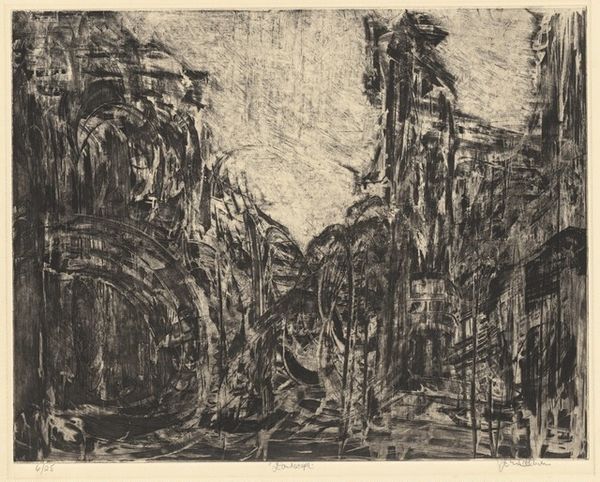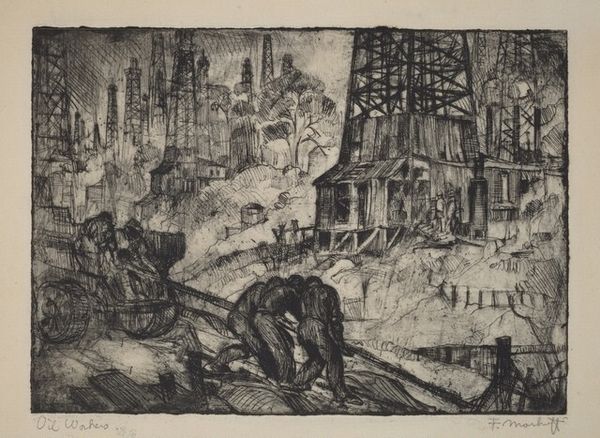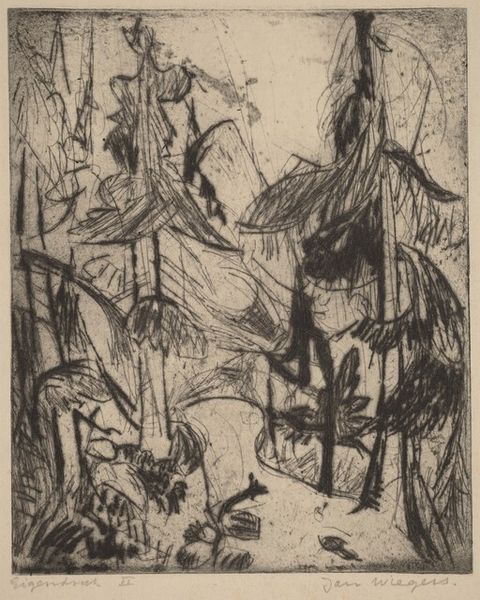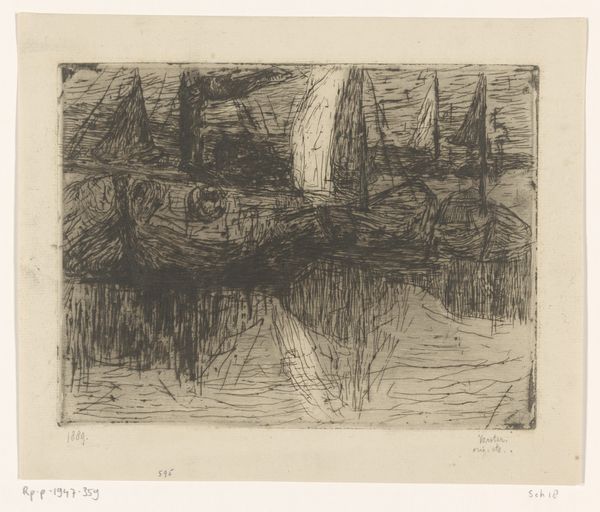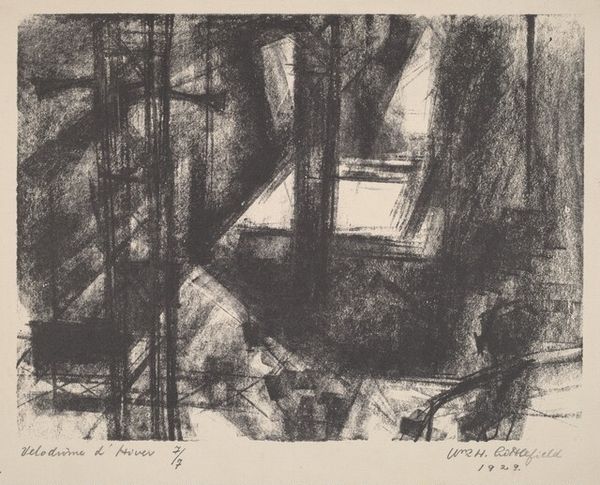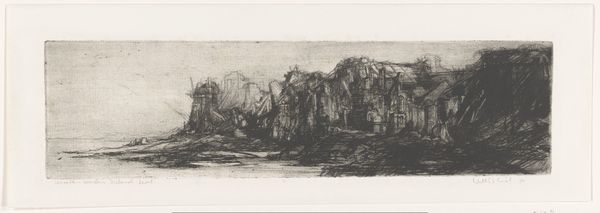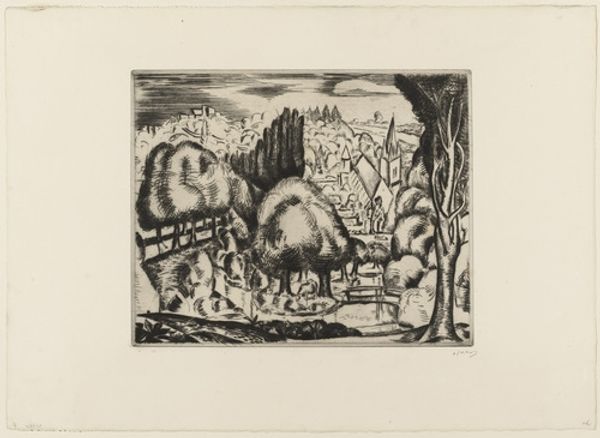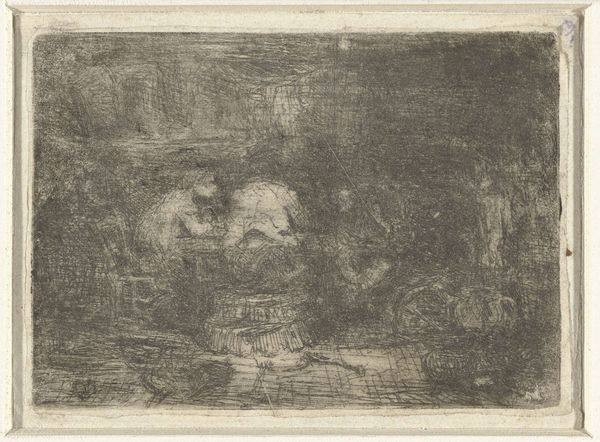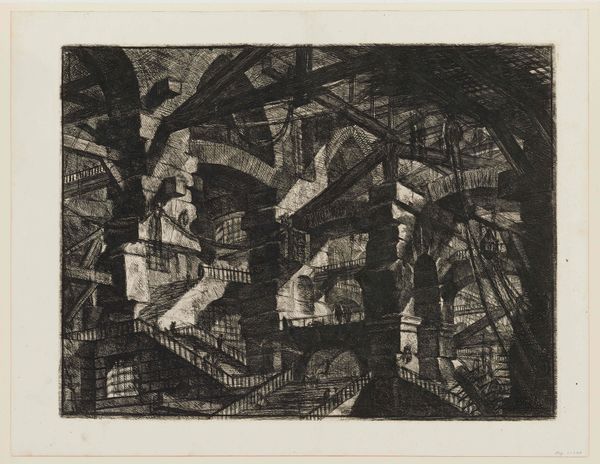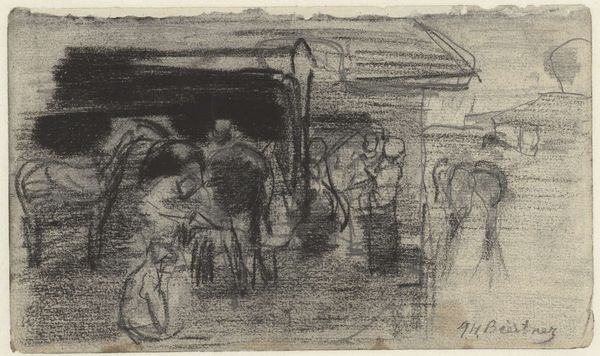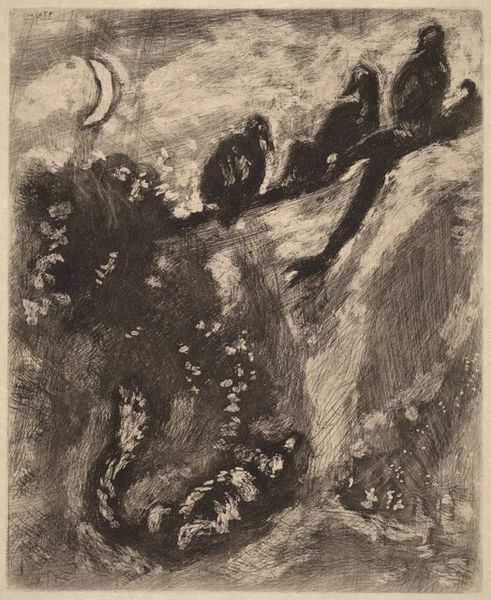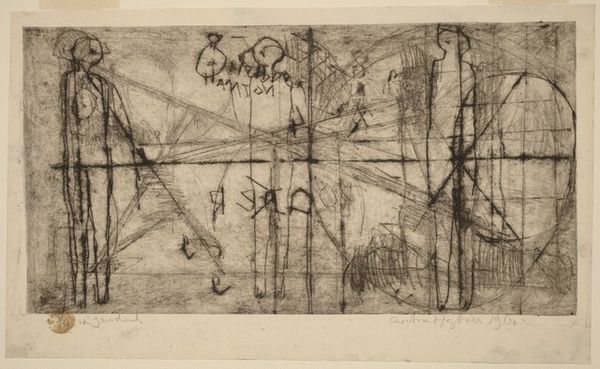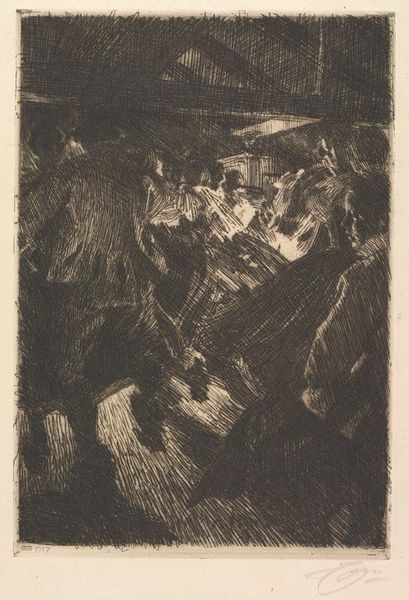
graphic-art, print, graphite
#
graphic-art
# print
#
expressionism
#
graphite
#
cityscape
Dimensions: plate: 27 × 31.8 cm (10 5/8 × 12 1/2 in.) sheet: 32 × 43.9 cm (12 5/8 × 17 5/16 in.)
Copyright: National Gallery of Art: CC0 1.0
Curator: Here we have Bernhard Kretzschmar's 1920 print, "Dampfer," or "Steamer." The medium appears to be graphite on paper, embodying an expressionist style with the theme of a cityscape. Editor: Immediately, I'm struck by the density. It feels like a dreamscape rendered in charcoal, all swirling lines and indistinct shapes barely holding their form. It feels vaguely apocalyptic to me, almost suffocating. Curator: Indeed. Kretzschmar employs a limited tonal range to create a claustrophobic environment. Notice how he uses etching and drypoint to build up textures, evoking a sense of grimy urban reality, which contributes significantly to this feeling of pressure and urban anxiety. Editor: The steamboats themselves, the focal point presumably, seem almost consumed by the industrial landscape, don't they? It's as if the machinery has become organic, overgrown, fused with the cityscape, breathing out smoke. Is the drawing suggesting technology gone wild? Or a commentary on post-war disillusionment? Curator: The composition suggests a dismantling of objective reality. The receding space becomes convoluted, losing its perspective. While there is dynamism here in the rendering, the sharp hatching that defines the buildings and figures traps one within this space rather than inviting escape. This fragmentation certainly mirrors the fracturing of societal norms post-World War I. Editor: And look at the people! They are spindly and fragile compared to these monstrous engines, almost like ghosts drifting within the frame. Do they have purpose? Does their presence humanize this otherwise brutal panorama or only highlight their insignificance? It makes you wonder what the citizens of Dresden thought looking at this kind of social commentary. Curator: A valid observation. Consider the Expressionist movement more broadly during this time. Artists intentionally used distortion as a device to critique social norms and industrial progress, leading viewers to question what defined modernity. Editor: I can almost feel the vibrations and smell the coal smoke from here. It’s a deeply unsettling piece, though captivating, with its brutal honesty. A bleak reminder of a turbulent past and perhaps a caution for our future, even now. Curator: I concur. Kretzschmar challenges us to consider our own relationship to the ever-expanding, transformative power of industrialization and the changing human condition in a world irrevocably marked by mechanization.
Comments
No comments
Be the first to comment and join the conversation on the ultimate creative platform.
